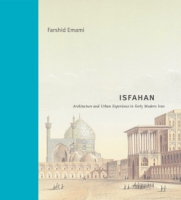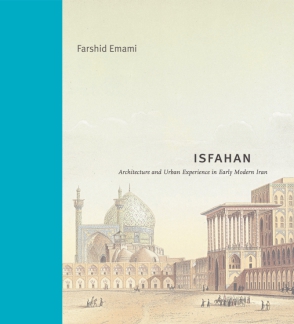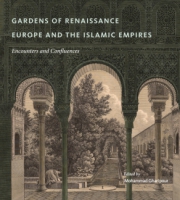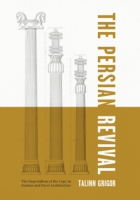Isfahan
Architecture and Urban Experience in Early Modern Iran
Farshid Emami
Winner of the 2025 IJIA Book Award“Somewhere between a coffee-table book and an academic publication, it beckons the reader with colored plates of Isfahan’s tiled masterpieces, clear reproductions of historical sketches, as well as the author’s own architectural drawings, both floor-plans and angled projections, that bring back the grandeur and elegance of the Safavid capital.”
- Description
- Reviews
- Bio
- Table of Contents
- Sample Chapters
- Subjects
Focusing on nuances of urban experience, Farshid Emami expands our understanding of Isfahan in a global context. He takes the reader on an evocative journey through the city’s markets, promenades, and coffeehouses, bringing to life the social landscapes that animated the lives of urban dwellers and shaped their perceptions of themselves and the world. In doing so, Emami reveals seventeenth-century Isfahan as more than a cluster of beautiful monuments and gardens. It was a cosmopolitan city, where senses and materials, nature and artifice, and ritual and sociability acted in unison, engendering urban experiences that became paramount across the globe during the early modern period.
Drawing extensively on Persian literary and visual sources, including the “Guide for Strolling in Isfahan,” this book casts new light on the history of a major Eurasian city and opens up new possibilities for cross-cultural studies of urban experience in the early modern period.
“Somewhere between a coffee-table book and an academic publication, it beckons the reader with colored plates of Isfahan’s tiled masterpieces, clear reproductions of historical sketches, as well as the author’s own architectural drawings, both floor-plans and angled projections, that bring back the grandeur and elegance of the Safavid capital.”
“Rather than a simple factual examination of Isfahan and its architecture, Emami offers a finely textured portrait of the city, a sensory experience that makes readers take in its sounds and smells, allowing them to listen in on the discussions in the coffeehouses flanking the square.”
“Emami’s approach to Isfahan considers this imperial city as a total lifeworld filled with movement, smells, sounds, and people. His prose is simply superb: it is such a pleasure that it transforms an otherwise deeply researched scholarly study into a spirited page-turner.”
“Farshid Emami’s ambitious study of one of the most celebrated cities of the Islamic world sheds new light on Isfahan’s urban transformation in the early modern period and reconstructs the way urban dwellers experienced and perceived the city, not only as a work of architecture but as a living space. Essential reading for all those interested in the global history of early modernity, urbanism, and visuality.”
Farshid Emami is Assistant Professor in the Department of Art History at Rice University.
Contents
List of Illustrations
Preface and Acknowledgments
Note to the Reader
Introduction: Isfahan as Urban Experience
Part 1 Rise of a Metropolis
Chapter 1 The Medieval City: The Lore of Isfahan and Early Safavid Developments
Chapter 2 Imperial Plans and Urban Elites: The Construction of Isfahan Under Shah Abbas
Chapter 3 The New Isfahan: The Safavid Garden City and Its Eco- Urban Design
Part 2 Urban Spaces and Experiences
Chapter 4 Sensing Time and Sound: Clocks and the Rhythms of Urban Life
Chapter 5 The Visual Order of the Promenade: The Chaharbagh and Its Sensory Landscape
Chapter 6 Inhabiting a Cosmopolis: Urban Quarters and Civic Selves
Part 3 Lyrics and Subjectivities
Chapter 7 The City Lyricized: Architecture and Literature in Safavid Isfahan
Chapter 8 Urban Sights and Discursive Images: Modes of Visual and Verbal Engagement
Chapter 9 Solitary Wandering and Civic Pleasures: A Daylong Journey in Isfahan
Conclusion: Isfahan as an Early Modern City
Appendix: “Guide for Strolling in Isfahan”
Notes
Bibliography
Index
Download a PDF sample chapter here: Introduction
Also of Interest
Mailing List
Subscribe to our mailing list and be notified about new titles, journals and catalogs.







